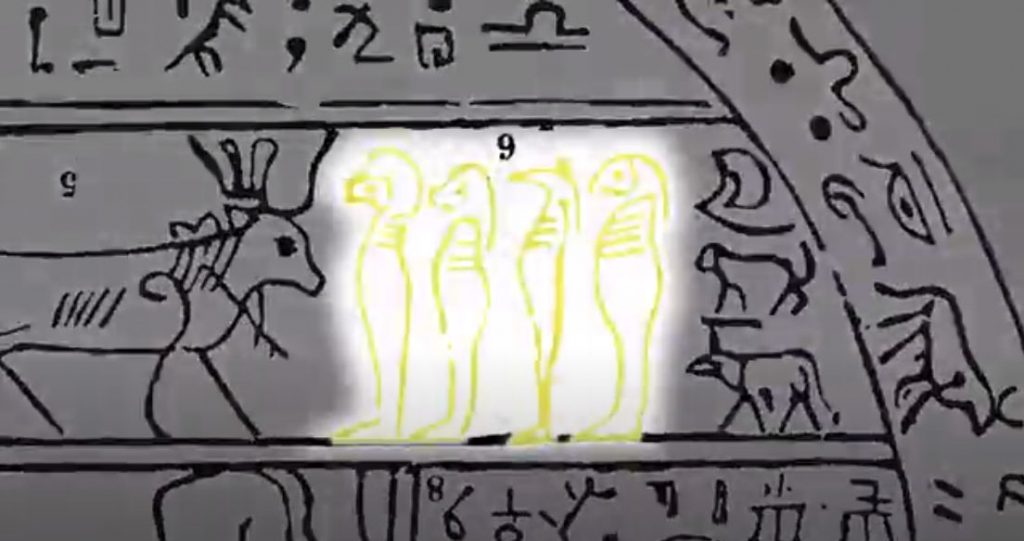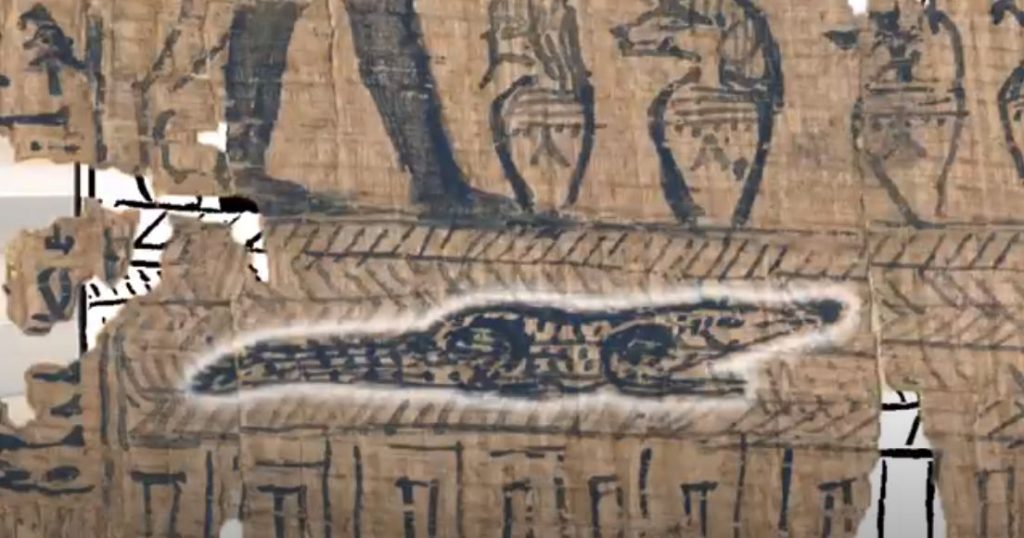Hey guys! In the last episode, we talked about the relationship between Joseph Smith’s Egyptian papyri and the Latter-day Saint Book of Abraham. As promised, in this episode we’re going to talk about the Facsimiles included in the Book of Abraham. Let’s see what we can find out.
So there’s a lot we could discuss about the facsimiles, but let’s jump right into the controversy, because why not? Do Joseph’s interpretations of these Egyptian illustrations match those of modern Egyptologists? And the answer to that is, in general, no, they don’t. For example, Joseph said this was about Abraham on Pharaoh’s throne talking to Pharaoh’s court about astronomy. But Egyptologists say it’s a deceased individual being led to the throne of Osiris, the god of the underworld. So how do we reconcile these apparent “misinterpretations”?
Well, people generally fall into one of three categories when it comes to the interpretations of the Facsimiles: Nothing is inspired, Everything is inspired, or Some parts are inspired, and some are not.
The first group believes that since there are discrepancies between what Egyptologists say and what Joseph said, nothing about Joseph’s interpretations are inspired. In other words, Joseph just made it all up. Some people present this case as if it’s a smoking gun, and that anyone who still believes Joseph was a prophet is being willfully ignorant or academically dishonest. You’re certainly free to believe that, it’s an easy way to shrug off Joseph’s prophetic claims. And this theory can explain the things Joseph got wrong, but it fails to explain the things Joseph actually got right from an Egyptological perspective. For example:
Putting yourself in Joseph Smith’s day when virtually nothing was known about ancient Egyptian, what would be your guess as to what these 4 figures from Facsimile 2 represent? Joseph said they represented “this earth in its four quarters.” Modern Egyptologists say these are the 4 sons of Horus, and one of their roles was to represent the 4 cardinal directions. Joseph gets this one right.

Or take this figure from Facsimile 1. What would you imagine this crocodile might represent? Joseph said it was the idolatrous god of Pharaoh. Modern Egyptologists say it’s probably the crocodile deity Sobek, who among other things, “was closely associated with the Pharaoh of Egypt.” Once again, Joseph nails it, and other examples could be given.

Proponents of theory 1 have to decide what to do with the stuff Joseph gets right, and they often attribute it to luck or coincidence, which happens shockingly often for this Joseph Smith guy, but theory 1 is on the table. For some people, though, luck is not an adequate explanation, and they adhere to one of the two other theories.
The 2nd theory is that everything Joseph said about these 3 illustrations is inspired and correct, and we’re just missing too many pieces of the puzzle to be able to understand how that is. So this would assume that Egyptologists are either wrong or barking up the wrong tree altogether. Maybe Joseph was never giving an interpretation of what ancient Egyptians would have thought about these illustrations. Maybe it’s how ancient Jews in Egypt would have interpreted them, or maybe they held unique meaning to the priests who had access to these papyri. There are several different theories, but unfortunately, none of them can be proven. Yet, theory 2 is on the table.
The third option is that Joseph’s interpretations are partially inspired, and partially not. Latter-day Saints certainly believe that prophets (just like any human) can just get things wrong sometimes. Even the introduction to the Book of Mormon itself says, “if there are faults, they are the mistakes of men…”
It’s clear that Joseph Smith was very interested, academically, in these ancient Egyptian artifacts. And as most any person of faith could probably attest to, sometimes it’s not always easy to differentiate between your own thoughts and opinions, and revelation from the Spirit of God. That may sometimes have been the case for Joseph Smith, as well.
This theory could explain how he nails some of these interpretations that he should have been clueless about, and why many of his other interpretations don’t match what modern Egyptologists think they should mean.
But that begs the question, why would God allow Joseph to get some of this wrong? I don’t know, but it could be that these mistakes, if that’s what they are, just weren’t all that doctrinally significant. Joseph said this guy’s name was Shulem. Egyptologists say it’s Hor. I wouldn’t care if it turned out to be Steve. It isn’t doctrinally important.
To Latter-day Saints, the text of the Book of Abraham is infinitely more important than the Facsimiles. In all reality, we rarely do anything in our faith with the facsimiles. They’re fun curiosities, but not super relevant to our beliefs. The believability of the text of the Book of Abraham is much more important, and for more info on that, check out this video from PearlofGreatPriceCentral.
So those are the three theories that people generally adhere to. Pick whichever one you believe is right (or none at all), but also try to understand and respect those who adhere to a different theory than you, whether you’re a member of our faith or not.
Learning More:
- Approaching the Facsimiles, by Pearl of Great Price Central: https://bit.ly/2yvEFcI
- “Assessing the Joseph Smith Papyri: An Introduction to the Historiography of their Acquisitions, Translations, and Interpretations,” Interpreter Foundation: https://bit.ly/2yFscmG
- “Joseph Smith and Egyptian Artifacts: A Model for Evaluating the Prophetic Nature of the Prophet’s Ideas about the Ancient World,” BYU Studies: https://bit.ly/2RWU7FJ
- Pearl of Great Price Central insights into specific figures in the facsimiles, and more: https://bit.ly/2XPL5Oy
- “The Book of Abraham, Joseph Smith, Revelation, and You”: https://bit.ly/3eNecYI
- An interesting perspective on the facsimiles, by Michael D. Rhodes: https://bit.ly/3cDnepy
- “The Neglected Facsimile: An Examination and Comparative Study of Facsimile No. 3 of the Book of Abraham,” by Quinten Barney: https://bit.ly/3aY75KB
- Some of the things Joseph somehow got right: https://bit.ly/2x7qR83
